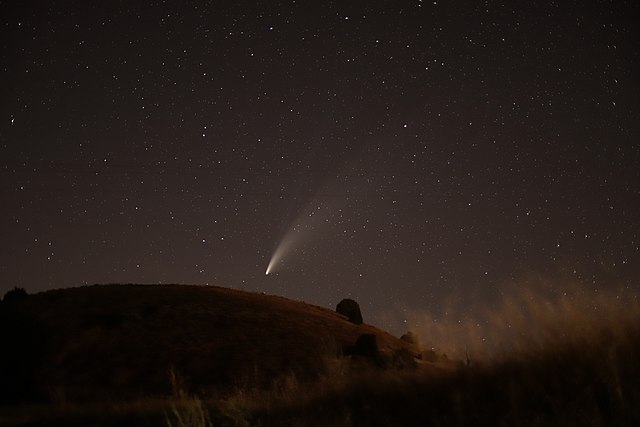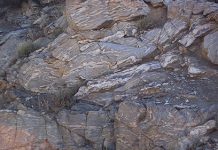
By Jim Brace-Thompson
Earth spins in a heavenly dance around the Sun at the center of our solar system, but they don’t dance alone. A whole troupe of partners swirls along. There are all of the other planets. These planets include dwarf planets, many moons, asteroids, and—with the sweeping tails of prima donnas—the comets. Like, true prima donnas, comets take part in the dance but do so while remaining cold, aloof and distant. Rather than tight circular orbits, they take long elliptical loops around the Sun, which may take a hundred or a thousand years or more to complete.
One comet, in particular, has been visible this July, a 3-mile wide comet named Neowise. Have you seen it? If not, hurry! Try to find a spot that’s relatively free from light pollution, then look below the Big Dipper a couple hours after sunset.
But again, hurry! Neowise was at its best in the early weeks of July, as it approached the Sun. It has circled and is now headed back into deep space and will not return to visibility for Earthlings for another 6,768 years!
As the comet speeds back toward deep space, you will likely need binoculars or a telescope to glimpse its shimmering tail. Meanwhile, amateur astronomy photographers have had a field day. Google “Neowise” and be amazed at the wonderful photos of this most aloof partner in the heavenly dance around our Sun.













